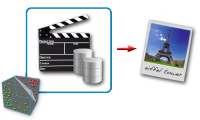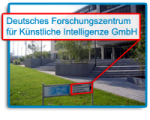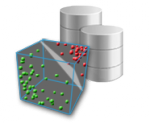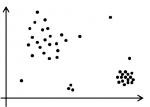Image and Video Analysis
With the availability of digital imaging devices, users world-wide generate and collect vast amounts of image and video data, and digital visual content has become an integral part of our everyday life. Our research targets at the development of novel approaches for exploiting this content efficiently. This includes intelligent search and browsing functionality, as well as techniques for extracting higher-level semantic information directly from the visual content. Our main research topics are:
Image- and Video Retrieval & Browsing
To utilise huge image and video collections, advanced search and
browsing functionality is required. We are working on content-based techniques
that do not require a manual acquisition of meta-data, with core aspects
of our research being:
|
|
Visual Classification & Concept Detection
The automatic recognition of semantic concepts in image and video data is a core challenge of modern multimedia management, opening applications like intelligent content filters, surveillance, personal video recommendation, or content-based advertisement. We focus on the following research topics in the area:
|
|
Text in Image Recognition
While optical character recognition (OCR) is well-developed in
the document analysis domain, the detection and recognition of textual
information in arbitrary image data is still an unsolved research topic.
Here, recognition algorithms have to deal with challenges like
strongly varying illumination and scale, different forms of distortion, and uncommon
fonts. Our work addresses the following topics:
|
|
Document Image Analysis
In spite of the increasing relevance of electronic documents, the digitalisation and processing of traditional paper-based documents is still a crucial step in many business processes. MADM is developing advanced algorithms for supporting the automated analysis and interpretation of document images with a focus on the following topics:
Layout Analysis
Beyond the digitalisation of pure textual information with Optical Character
Recognition (OCR) algorithms, the interpretation of the layout is also crucial for understanding and digitising the content of a document. We are working on basic layout analysis technologies including
|
|
Document Counterfeit Detection
Another focus of our research are novel approaches for verifying the
originality of sensitive documents like receipts, certificates, or contracts. Important research topics here are:
|
|
Data Mining
Beyond the work in the image and video domain, MADM is also conducting research in other data mining domains.
Pattern Recognition Engineering
One goal of this research is to make pattern recognition algorithms more accessible to real-world software developers which don't have a deep expertise in these algorithms. Research topics here are:
|
|
Anomaly DetectionAn important issue in many application domains is the detection of anomalous data instances and data patterns. A popular example is the detection of misuse in financial transaction data or telecommunication systems.
We are developing statistical anomaly detection algorithms with a focus on unsupervised scenarios where neither labeled normal nor labeled anomalous data samples are available for training (semi-)supervised algorithms. Central research topics here are:
|
|
Network Security
Another goal is the application of statistical pattern recognition algorithms in network security applications:
|
|
Financial & Business ApplicationsMoreover, we have expertise in applying pattern recognition and machine learning approaches in financial and business applications. Typical application examples here are credit scoring and fraud detection. |











